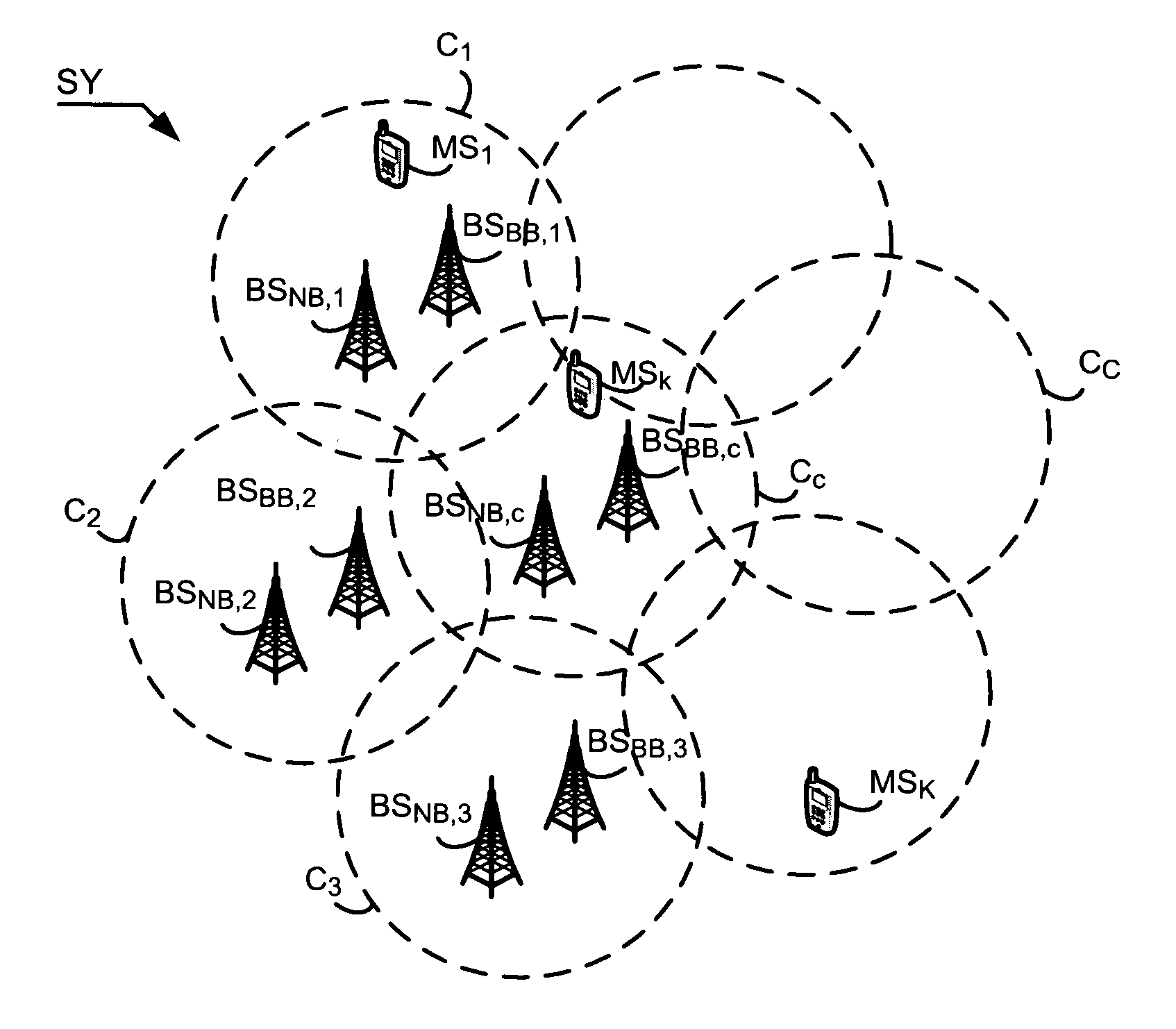Method for scheduling frequency channels
a frequency channel and frequency technology, applied in the field of frequency channel scheduling, can solve the problems of severe reduction of the capacity of the broadband communication system, and achieve the effect of reducing the interference of the carrier frequency
- Summary
- Abstract
- Description
- Claims
- Application Information
AI Technical Summary
Benefits of technology
Problems solved by technology
Method used
Image
Examples
first embodiment
[0072]According to the scheduling method, in the association step EA, the association unit UA of the scheduling device DP determines a first set A of first groups of frequencies A1 to AM, each first group Am, with 1≦m≦M, being associated with one or more cells of the radiocommunication system SY according to the frequency reuse rules RU. To each first group of frequencies Am is assigned a set of F frequencies fam,1 to fam,F while complying with a minimum frequency gap Δfe between each frequency fam,f of the frequency group Am. Each set of frequencies is disjoint from one first group of frequencies to another first group of frequencies. In the case where several first groups of frequencies are allocated to a cell CC, the set of frequencies corresponding to the union of the sets of frequencies making up the first groups allocated to the cell comply with the minimum frequency gap Δfe. The reuse rules RU consist in associating one or more first groups of frequencies from among the M fir...
second embodiment
[0111]According to the scheduling method, the scheduling device DP defines a first set B of C groups of carrier frequencies B1 to BC associated respectively with the C cells of the radiocommunication system SY and each group comprising carrier frequencies, called different “virtual” frequencies. The virtual carrier frequencies can correspond for example to names of frequencies which will be associated subsequently with carrier frequencies of the frequency band ΔFsye of the radiocommunication system SY. The number of virtual carrier frequencies in a group can vary from one group to another. Each group BC is disjoint from another group of the set B. The device also defines a set of virtual blocks comprising an infinite number of frequency blocks, called virtual frequency blocks, BFv1, . . . , BFvh, . . . , BFv∞ in some of which will be distributed the virtual carrier frequencies in the step ER. Each virtual frequency block BFvh comprises N carrier frequencies Fv1,h to FvN,h. The virtu...
PUM
 Login to View More
Login to View More Abstract
Description
Claims
Application Information
 Login to View More
Login to View More - R&D
- Intellectual Property
- Life Sciences
- Materials
- Tech Scout
- Unparalleled Data Quality
- Higher Quality Content
- 60% Fewer Hallucinations
Browse by: Latest US Patents, China's latest patents, Technical Efficacy Thesaurus, Application Domain, Technology Topic, Popular Technical Reports.
© 2025 PatSnap. All rights reserved.Legal|Privacy policy|Modern Slavery Act Transparency Statement|Sitemap|About US| Contact US: help@patsnap.com



